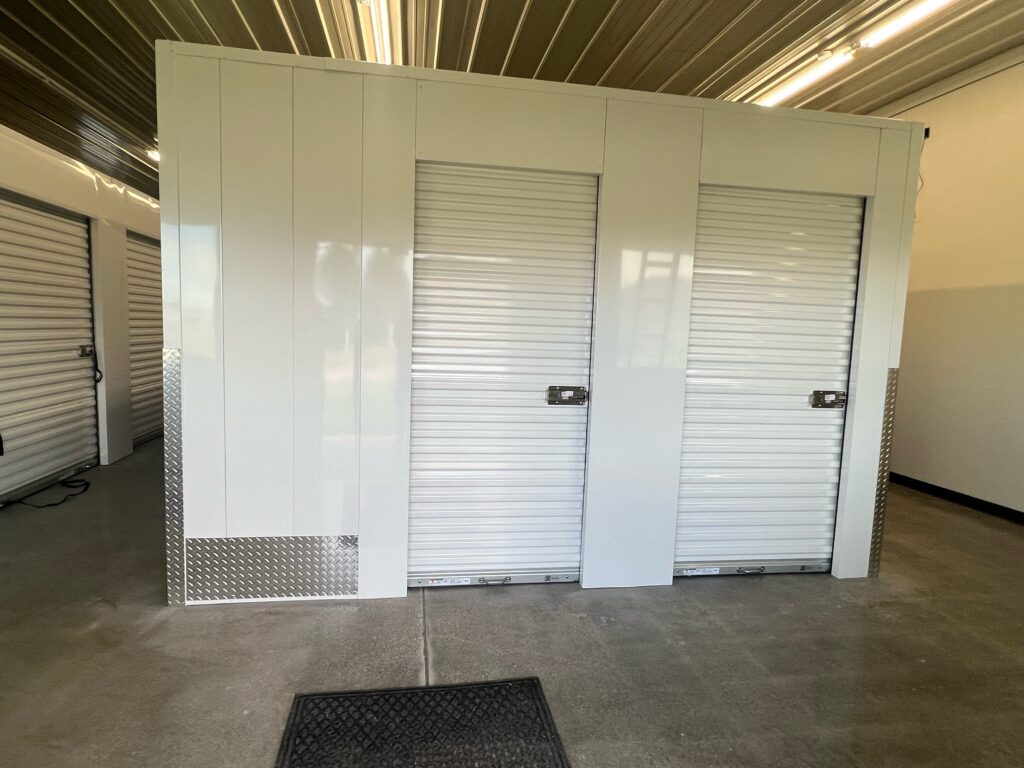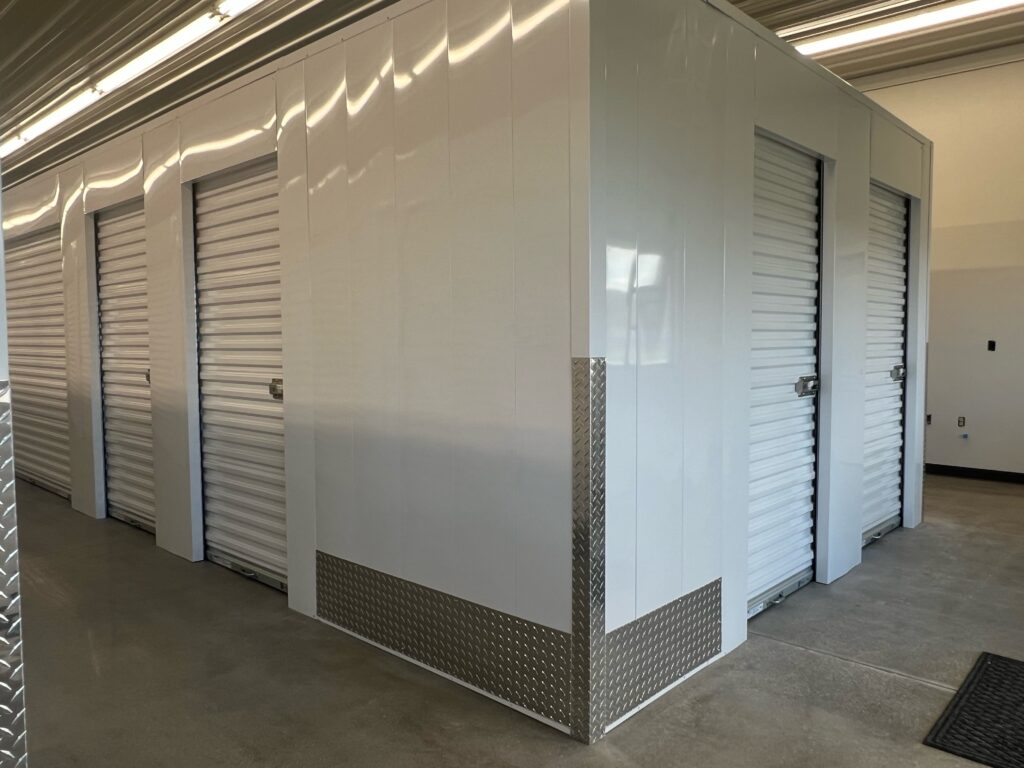Climate Controlled Self Storage: What It Is, Costs & Tips
Climate‑controlled self storage means a storage unit that keeps a steady indoor environment—typically moderate temperatures and lower moisture—so your belongings aren’t exposed to sweltering heat, freezes, or damp air. Unlike outdoor, garage-style spaces, these units sit inside a conditioned building with systems that help prevent mold, warping, rust, and electronics damage. It’s the go‑to for wood furniture, photos and art, records, instruments, documents, business inventory—anything you wouldn’t leave in an attic or shed—especially with Sioux City’s humid summers and subzero winters.
In this guide, we’ll explain how climate control works, clarify climate vs temperature vs humidity control, and outline the types you’ll see. You’ll learn when you truly need it (and when you don’t), what it costs and what drives the price, smart ways to save, the right unit size, and packing steps that protect sensitive items. We’ll also cover security must‑haves—including modern keyless, app‑based access—what to look for in a facility, how to rent online, local weather factors, and mistakes to avoid. Let’s find the right unit without overpaying.
How climate-controlled self storage works
Climate-controlled self storage works by placing your unit inside a conditioned building where HVAC systems heat or cool to a target range (often about 55–80°F per major providers) and circulate air to blunt heat spikes and deep freezes. Sensors cycle the system as needed; in some facilities, dehumidifiers add moisture control. Because doors open and people come and go, the goal is moderation, not a perfect living-room setpoint, but it dramatically reduces temperature and humidity swings that cause warping, mold, corrosion, and electronics failure. Indoor corridors also add a barrier to dust and pests.
Climate control vs temperature control vs humidity control
In climate controlled self storage, “climate control” broadly means systems that moderate temperature and, sometimes, humidity inside units. Temperature control keeps air within a set range—often about 55–80°F at providers—to limit heat and cold. Humidity control regulates moisture (via dehumidification) to a target RH range, reducing mold, warping, and corrosion. Because doors open and seasons change, setpoints aren’t guaranteed, and some sites offer heating or cooling only—so confirm the temp range and whether humidity is included.
Types of climate-controlled storage you’ll find
Climate‑controlled self storage comes in a few flavors, and the labels matter when you’re protecting sensitive items. The right choice depends on your climate, budget, and what’s in the unit. Here are the types you’ll see.
- Standard climate control: indoor, ~55–80°F; little humidity control.
- Air‑cooled: cooled air fights heat; not for humidity‑sensitive items.
- Heated only: keeps units warm; protects against freezing.
- Humidity‑controlled: regulates RH; helps prevent mold, warping, corrosion.
Do you need climate control? Items and situations that call for it
Whether you need climate control depends on what you’re storing, for how long, and how extreme your weather is. If heat, cold, or moisture could warp, crack, mold, corrode, or short‑out your items, climate controlled self storage is the safer pick. Non‑climate units run hotter/colder during swings; climate systems blunt those spikes and keep visits comfortable.
- Photos and artwork: humidity and heat distort paper and adhesives.
- Wood furniture, leather, antiques: prevent warping, cracking, mold.
- Electronics and computers: avoid condensation, heat stress, corrosion.
- Books, documents, archives: stop curling, yellowing, mildew.
- Musical instruments and vinyl records: maintain tuning/shape; prevent warping.
- Collectibles, heirlooms, and sensitive business inventory: preserve condition and value.
- Long‑term storage or peak‑season moves: more exposure magnifies risk.
What it costs and how pricing works
Climate controlled self storage typically costs more than standard units because facilities run HVAC and air systems year‑round; Public Storage notes these units “come at a premium.” Actual rates vary by size, location, amenities, and availability. Extra Space Storage’s published ranges illustrate the spread: city minimums around $17–$60, common maximums $200–$385, with high‑cost markets reaching $600+ in California and up to $937 in Hawaii. Smaller 5×5 units trend low; larger 10×15–10×20 units sit near the top.
- Unit size: larger space = higher monthly price.
- Market/demand: popular areas or tight supply drive rates up.
- Amenities: humidity control, 24/7 access, keyless entry, and strong security add cost.
Rates can change, so confirm your renewal price and what’s included when comparing providers.
Smart ways to save on a climate-controlled unit
Climate‑controlled self storage is worth the premium, but you can still cut costs. Use these quick, low‑effort tactics.
- Right‑size: measure big items; pack vertically to step down.
- Choose features wisely: standard climate for most; humidity/heat‑only when needed.
- Compare total cost: rate, taxes/fees, and any insurance—check your policy.
- Reserve early online: compare nearby neighborhoods; join a waiting list.
- Skip padlock costs: keyless access means you don’t buy one.
Storage unit sizes and what fits in each
Choosing the right size keeps costs down and move‑in easy. With climate controlled self storage, think cubic feet—not just floor space—since vertical stacking and sturdy shelving boost capacity. Ground‑floor access means rolling in couches and appliances without elevators; leave an aisle and label boxes you’ll access.
- 5×5: small closet; 8–10 boxes, décor, files, small electronics.
- 10×10: studio/1‑bed; queen mattress, sofa, dresser, dining set, boxes.
- 10×15: 2‑bed home; sectional, mattresses, appliances, shelving, inventory.
- 10×20: 3‑bed home contents; multiple sofas, large tables, wardrobe boxes, equipment.
Packing and prep tips to protect sensitive items
Proper prep is what keeps sensitive items safe in climate controlled self storage. Even with systems moderating to roughly 55–80°F at many providers, units aren’t sealed labs—doors open and seasons shift. Pack to manage moisture, cushion shocks, and preserve finishes so furniture, electronics, and archives leave in the same condition they went in.
- Clean and dry everything: defrost appliances; prop doors open.
- Elevate and allow airflow: pallets/shelves; leave a center aisle.
- Breathable protection: cotton covers; never shrink‑wrap bare wood/leather.
- Archive‑grade supplies: acid‑free boxes/sleeves; rigid tubes for art.
- Electronics/instruments: original boxes, anti‑static wrap; remove batteries; loosen strings; add desiccant.
- Mattresses/soft goods: breathable bags; avoid long‑term vacuum sealing.
Security, keyless access, and insurance: what matters most
Great climate controlled self storage is only as strong as the security around it. Prioritize indoor buildings with 24/7 video and modern keyless entry so you’re not juggling—or losing—padlocks. App‑based access fits true 24/7 unit access and lowers key‑copy risks. For financial peace of mind, confirm how your items are insured before move‑in.
- Security must-haves: 24/7 video, indoor access, bright lighting, clean, well‑maintained corridors.
- Insurance basics: check homeowners/renters coverage, ask about facility-offered coverage, photo‑inventory valuables.
What to look for in a climate-controlled facility
Great climate‑controlled self storage blends steady conditions with secure, easy access. When you compare facilities, look past labels and verify how the environment is managed and how you’ll enter 24/7. Ask for the temperature range, humidity control details, and security basics.
- Verified climate: temp range, heating vs cooling, humidity available.
- Indoor, clean building: dust‑free corridors; well‑maintained systems.
- Security and access: 24/7 video, controlled entry, bright lighting, keyless app.
- Move‑in convenience: ground‑floor loading, wide doors, carts, nearby parking.
- Transparent pricing: rate, fees, access hours, insurance requirements.
Renting online: how the process works from start to move-in
Most climate‑controlled self storage can be rented online in minutes. Check availability by size, pick your unit, create an account, and complete the lease online. Pay to reserve your unit, then follow app instructions to activate your digital key for keyless entry. Choose a move‑in date, review access details (24/7 at Keyless Storage), and you’re set. If your size is sold out, join the waiting list.
Sioux City weather factors and local tips for renters
Sioux City swings from humid summers to subzero winters. Those extremes make climate‑controlled self storage in Sioux City the safer default, especially for wood, electronics, and photos. With temperature and humidity moderated indoors, you still get best results by timing your move and handling condensation and tracked‑in moisture smartly.
- Move during cooler hours: 24/7 access lets you dodge heat/cold spikes.
- Acclimate sensitive items: Let electronics/wood sit inside before powering on or tuning.
- Seasonal moisture steps: Winter—brush off snow; summer—add desiccant, use breathable covers.
Mistakes to avoid with climate-controlled storage
Even with climate controlled self storage, small oversights can undo the protection you’re paying for. Treat the unit as a moderated, not sealed, indoor space. Pack for airflow and access, and confirm what the facility actually provides before storing sensitive items.
- Assuming humidity control: Verify RH is included.
- Wrapping in plastic: Use breathable covers instead.
- Packing wall-to-wall: Leave an aisle and gaps.
- Storing on the floor: Elevate on pallets/shelves.
Conclusion
From how climate‑controlled storage works to costs, sizing, and prep, you now have the playbook to protect sensitive items without surprises. Climate moderation blunts the heat, cold, and moisture swings that can warp wood, corrode electronics, and mold paper; right‑sizing and smart packing keep access easy and costs in check. Verify the features you need and avoid the common pitfalls, and your stuff leaves as pristine as it arrived.
Ready for a simple, secure option in Sioux City? Choose 100% climate control, ground‑floor access, strong security, and keyless 24/7 entry with Keyless Storage. Rent online in minutes, see current pricing and availability, activate your smartphone key, and move in on your schedule. If your size is sold out, join the waitlist for quick alerts.




